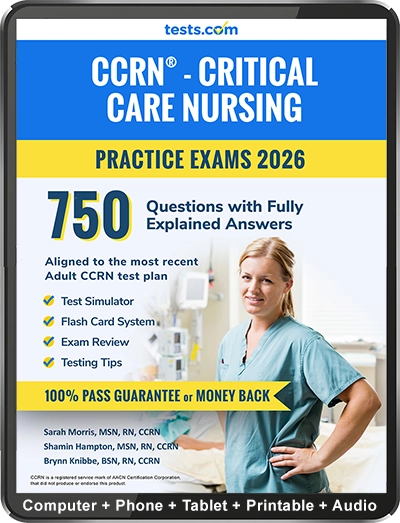2026 Edition
CCRN Practice Test
Study Online Instantly

Click to Save 50% Now
2026 Edition

Take this free CCRN practice test to study for the Critical Care Registered Nurse certification exam.
The CCRN exam is a 3 hour exam covering 150 multiple choice questions. The exam focuses on three general populations: adult, pediatric and neonatal patients. Within the three general populations, the following subject categories are covered: Cardiovascular, Respiratory, Endocrine, Hematology / Immunity, Neurology, Gastrointestinal, Renal, Integumentary, Multisystem, Mental Health and Professional Care and Ethical Practice. Each exam is age specific and a large percentage of each test focuses on clinical judgment.
For complete practice, check out the CCRN Practice Exam Kit with 750 questions and fully explained answers. It is written by CCRN experts and nursing instructors. Our interactive test platform allows you to simulate the exam. Take as many practice tests as you need. There's no time limit or recurring charges.
For more information on the CCRN exam and test prep, see our CCRN Study Guide.